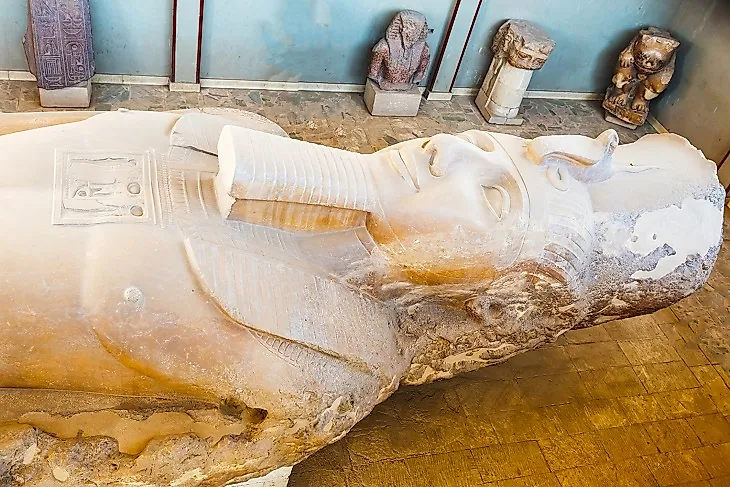Pharaoh Ramses II - Monarchs of the World

5. Early Life
Pharaoh Ramses II, also known as Ramesses or Rameses the Great, was born in 1303 BC. The son of Pharaoh Seti I and Queen Tuya, Ramses II likely grew up with extensive military training that began when he was but a young child. At the age of 10, he received the rank of captain in the Pharaoh's army, though that title was likely more honorific than functional in nature. However, he was named the official successor to the throne at 14 years old, and started joining his father on the battlefield, allowing him to gain firsthand experience in leadership over military campaigns. By the time he turned 22, he had already led campaigns into Nubia (today northern Sudan and southern Egypt along the Nile) with his fellow Egyptians, and was named his father’s co-ruler.
4. Rise to Power
After the death of his father in 1279 BC, Ramses II ascended to the throne and began his reign. However, along with his new title, Ramses II also inherited the kingdom’s many problems and conflicts. Internally, Ramses II, like Seti I before him, had to deal with the social unrest that had carried over from the previous pharaohs’ reigns. Although he was the ruler of the largest known empire in the ancient world up to that time, externally the kingdom face perpetual attacks from enemies from all directions. During the early years of his reign, he focused on architectural improvements, such as building cities, monuments, and temples, all the while continually participating in military campaigns.
3. Contributions
During his reign, Ramses II became best known for his leadership over military campaigns and initiating the construction of massive monuments. His most famous battles were a series of campaigns in Syria against the Hittites, an Indo-European people who were responsible for the destruction of the Babylonian Empire. The campaigns in Syria spanned over 20 years, and eventually led to the earliest known peace treaty, which was drawn by Ramses II and Hittite King Hattusili III. Among his architectural achievements, Ramses II created a new capital for his kingdom in the delta of the Nile, which he called Pi-Ramesses. This city, although in ruins now, grew to become one of the largest and most prosperous cities in all of Egypt for a time. He also oversaw the construction of the Ramesseum, a grand memorial temple dedicated to his reign.
2. Challenges
Being the largest empire in the ancient world, Egypt was surrounded by enemies on all sides at all times, in addition to those from within. From within the empire, Ramses II had to take over the job of quelling the social disorder that arose from among its disgruntled citizens. This was made especially worse in territories reclaimed from enemies where Ramses II had to fend off the Hittites, Libyans, and Nubians, each of whom constantly caused chaos throughout these lands. Egypt's conflicts with the Hittites began long before Ramses II’s reign and, although Seti I won against the Hittites many times during his life, it was not enough to drive them back completely, and Ramesses II was forced to carry on his father's legacy in fighting them until he achieved a peace treaty.
1. Death and Legacy
Amazingly for the day and age in which he lived, Ramses II was around 90 years old when he died. His mummy revealed that he was suffering from a number of medical issues at the time of his death, including arthritis, hardening arteries, and dental problems. Throughout his long life, he had sired over 150 children with his 200 wives, many of whom he outlived. Subsequently, in the memory of these children and wives who passed away before he did, he had many great monuments erected, such as the tomb of Nefertari, his first wife and queen. Ramses II brought military and economic success to his land, and is remembered as one of Egypt’s greatest pharaohs who ruled at the apex of the Egyptian Empire. Within less than 150 years following his death, the empire would fall, bringing an end to the New Kingdom.











